The STELLA POLARIS, METEOR and PRINZESSIN VICTORIA LUISE have been in
their days the epitome of luxury cruising, a long past era.
by Earl of Cruise, text passages from Alan Dumelow
in 1900
inaugurated a new type of passenger vessel in Hamburg the PRINZESSIN VICTORIA LUISE.
ss PRINZESSIN VICTORIA LUISE, 1900, HAPAG, the first custom build cruise vessel in history - courtesy coloured by Daryl LeBlanc, Source: Wikipedia (original seize)
The new vessel is the prototype for cruise vessels and especially all the Mega
Yacht named ships, that play to be a Mega Yacht. This new type of vessel was
initiated by the foreseeing genius of ALBERT BALLIN.
While under construction tout Hamburg was wondering what BLOHM&VOSS was
constructing for the genius ALBERT BALLIN, chairman of HAPAG.
A common joke was, that he had ordered a privat yacht as he had become
great-crazy. The more the small 4,409 GT vessel grew on the helling the more it
was looking like a yacht for a super rich industrial, business man or
aristocrat, or better a royalty. The 121,92m long vessel had the seize of and
showcased a bowsprit and a gallion, uncommon in those days for trade vessels,
either freight or passenger. THE features of a cutom built privat or royal
yacht. It was commonly seen as oldfashioned. It was the time when everybody
believed in future and progress.
The HAPAG
did very well under his chairmanship, and he invented a new form of touristik
venture - travelling on the seas for pleasure only, the cruise. With the
outbreak of the USA-Spain war in 1898 he could sell COLUMBIA and NORMANNIA at a very good price to the
Spanish Navy, as both ships despite their innovations, luxuries and success on
the North Atlantic became outdated. Both liners had been following the AUGUSTA VICTORIA and did cruises in the Winter Seasons.
ss AUGUSTA VICTORIA made the first modern cruise in history - Source: Wikipedia (Original seize)
These four German Greyhounds had been the epitome of luxury when set sail for the first time and started a
battle for luxury to attract the rich traveller on the North Atlantic.
Scientific American Feb 9th 1901 - Source: Wikipedia
It was Albert Ballin who realized
his company’s largest and flagship vessel, AUGUSTA
VICTORIA, lay largely unused during the winter season. Due to
inclement weather, travelers largely stayed away from the North Atlantic route.
Only those who had urgent businesses ashore the other side traveld. It was then
that Albert Ballin, despite criticism from his fellow directors at HAPAG and
other steamship companies, planned to send AUGUSTA VICTORIA on
a 58-day `pleasure voyage´ from Cuxhaven, Germany to the Mediterranean and Orient. This
extended cruise would include well-planned excursions ashore to ports-of-call
along the route and Albert Ballin would be as a tour guide onboard himself. The
voyage was a success and similar ones were planned imediately.
This first cruise was nearly a
gentlemens only cruise in the first place - perhaps these gentlemen did want to
be free from their wifes for a timeperiod.
Despite their increasing success,
these early cruises, called `excursions´, or `Gesellschaftsreise´ were difficult
to plan with existing ships. Constructed as oceanliners, they did not meet the requirements of the pleasure-seeking market
and its inventor. They offered few for cruises needed amenities aboard. This
became apparent during long stretches at sea. Furthermore, their construction
as multi-class vessels also proved a hindrance as such vessels provided
restricted access to deck space. Whatever deck space there was, was mostly
sheltered, and designed to accommodate the rigors of the North Atlantic instead
of the seas of more southern climes. Albert Ballin believed that only a vessel
specifically designed for cruising would be appropriate, furthermore, such a
vessel could spend the entire year doing so.
In 1899, Albert Ballin became
director at HAPAG and months later, in 1900, commissioned BLOHM&VOSS
to construct such a ship, to be named after KaiserWilhelm II's daughter. The ship was launched
on 29 June 1900 and christened Prinzessin Victoria Luise.
With cruises targeted toward wealthy
travelers, PRINZESSIN VICTORIA LUISE was designed to look more like a
private yacht
than any of her commercial counterparts. She had a trim hull 15.9 m (52.2
feet) wide by 124.2 m (407.5 feet) long. She was painted all white with
two masts, one fore and aft, and two tall, slim funnels amidships. She had a
rounded stern and a richly decorated clipper bow, with bowsprit,
ending in a figurehead of the German princess.
On board, she also did not look like
other commercial vessels of the time. She contained 120 cabins for 192
passengers, all first class. 161 crew served on the vessel. All staterooms were
luxuriously appointed. Reportedly, Albert Ballin instituted some interior
modifications recommended by the Emperor. There was also a library, a
gymnasium, and a darkroom for the development of film by amateur photographers.
Pushing all this at a steady 15 kts
(28 km/h) were quadruple expansion steam engines of 3,600hp. After fitting
out, the Kaiser formally inspected the vessel and was a bit unhappy that it was
slightly longer than the imperial yacht HOHENZOLLERN. Which souvereign
would not?
smy HOHENZOLELRN - Source: Wikipedia
To the uninformed, anyone seeing the PRINZESSIN
VICTORIA LUISE for the first time could be forgiven for believing
she was a Royal Yacht. Indeed, she bore great similarity to many Royal Yachts
of the late 19th century and early 20th century, not least
the Egyptian Royal Yacht EL MAHROUSA,
originally El HORRIYA. Last to be seen in public view, when she was
traversing the enlarged SUEZ CANAL Aug 07th 2015, as she did when the imperial yacht of
France L´AIGLE and the yacht of the Egyptian Khedive Ismail
Pasha, the EL MAHROUSA, sailed
the Canal in 1869.
Parade of state yachts in 1869 for the first opening of the Suez Canal - copy from The London Illustrated, own collection
EL MAHROUSA ex EL HORRIYA 1862 - Source: CHARTERWORLD
The French imperial yacht L´AIGLE - own collection, copy
PRINZESSIN
VICTORIA LUISE left
on her maiden voyage on January 5th
1901 from Hamburg,
stopping at Boulogne,
Plymouth,
and finally reaching New York on January 17th. She would depart New York on January
26th
to the West Indies for her first cruise. Her second cruise, to the Mediterranean
and the BlackSea, commenced from New York on 9 March. Other cruises would take the ship
to the Baltic.
She would be used almost exclusively for cruising as she had limited cargo or
mail capacity. Yet, she would be diverted from cruising on six occasions to
make complete transatlantic crossings.
Almost five years after her debut,
her career came to an end while on a West Indian cruise. On the night of December 16th the ship had tried to enter the
harbor of Kingston but later her commander Captain Brunswig
decided to anchor at Port Royal when he mistook the lighthouse at Plumb Point for that at the
westernmost point of Port Royal. Heading north at 14 kts
(26 km/h; 16 mph), the ship hit and climbed onto the rocks bow first
at about 09:30 pm. In an attempt to dislodge the ship, the engines were put
full astern to no avail.
The captain retreated to his cabin
and shot himself. The passengers were rescued the following morning. A German
Admiralty court found the captain negligent in May of the following year.
Salvage operations commenced
immediately after the grounding. The German cruiser Bremen and the French training
ship Duguay-Trouin came to the
aid of the stranded ship with Bremen
attempting to tow the steamer off the rocks. Within days, continued buffeting
by waves and a storm pushed the ship broadside of the shore with a sharp list
to port. Inspection revealed major structural damage to her frame and keel
plates. Her engines had been displaced during impact and her port side was
filled with 16 feet (4.9 m) of water. She was declared a total loss on December
19th.
The success of PRINZESSIN
VICTORIA LUISE and cruise offers with other vessels showed HAPAG that there is
a demand for cruises even in those classes of society that don´t have the money
to spend which is compared to a two years salary of a common worker - e.g. RM
895,00 per person.
After in deep research, ordered by Albert Ballin,
HAPAG signed with BLOHM&VOSS the contract for building the METEOR meeting
the demands of the not too wealthy cruise interested public, but rich enough to
spend a first class ticket for pleasure - the upper middle class.
And 1904 saw the new and second purpose built cruise
vessel in the world the METEOR. The vessels dimension had been 91,20 x 13,40 m,
had 3,613 GT and could accomodate 283 passengers in I. Class. Her double screws
propelled her to 12kts. The difference between nowadays boutique cruise ships and theses two first ever purpose built cruise vessels is the missing of a pool.
Period postcard of ss METEOR, 1904, HAPAG - own collection
She had a clipper bow and a bowsprit and looked as
the PRINZESSIN like a millionaires or royal yacht. Her inaugural cruise started
on March 15th 1904 to Norway - a very popular destination in Germany in those
days, still nowadays, as the Kaiser himself cruised often to Norway.
In 1914 she was
comissioned as Barrack vessel by the REICHSMARINE for the U-Boat flotilla and
was handed to the Shipping Controller in 1919. She given to the ROYAL MAIL
STEAMSHIP COMPAY who transfered her to H.J.JEWELL. In 1922 she was sold to DET BERGENSKE DAMPSKIPSSELSKAB For DET BERGENSKE she sailed as a cruise ship within the Norwegian Fjiords as
well other destinations.
When the REICHSWEHR occupied Norway in 1940, avoiding
the British occupation, the METEOR was seized by the German forces and was
transformed into a hospital vessel.
On March 9th
she was offshore Pillau, used as a refugee vessel for the evacuation of
Prussia, when she was hit and sank during an airraid.
This METEOR
became the blueprint for a verry succesful successor - the STELLA POLARIS.
ss OCEANA 1905, ex SCOT 1891, a former liner converted to cruise only - own collection
1905 saw a new vessel, an aquisition, and converted
to become a cruise vessel, the OCEANA. She began her life 1891 as SCOT for
UNION LINE and their UK Capetown route. HAPAG´s cruise offers had been that
successfull, that a further vessel was needed to cover the market needs. So
SCOT went to BLOHM&VOSS after purchasing and was rebuild as one class
luxury cruise vessel to cater the market niche that Albert Ballin discovered,
opend and as the market leader and only provider served. HAPAG had the monopol for
cruises and served the market with purpose newbuilds and a purpose rebuild -
the OCEANA.
ss OCEANA, 1905, HAPAG, rebuilt for cruising with First Class passengers - own collection
SCOT was built with clipper bow and bowsprit, so the
vessel was looking corporate for the HAPAG cruise vessel fleet. In those days the
only other big vessels built in that classical style have been the EMPRESS vessels of CANADIAN PACIFIC STEAMSHIPS.
EMPRESS OF INDIA passing through First Narrows Vancouver 1891 - Source: Wikipedia (original seize)
The cruise vessels of HAPAG became from their look
the synonym for cruise vessels of their days and dictated the look for cruise
vessels. As it was with their white hulls. Both synonyms for leisure cruises.
But there was something else. It was not only the
look or the luxurious outfitting onboard. It was too the spotless and caring
service of the crew which made the vessels famous and synonyms for luxury. As
well the marvelous food onboard which was top and as some guests, sophisticated
travellers and even French guests recomended, the best they ever have eaten,
weather in a famous French restaurant ahore or on board the well renowned for French
vessels and their cusine.
HAPAG was pre WWI the benchmark in luxury, Food
& Beverage and service on the seas. HAPAG was the market leader. With its
three high end luxury cruise vessels HAPAG catered the international cruise
market it had invented.
ss PRINZESSIN VICTORIA LUISE grounding and loss in Jamaica 1906 - Source: New York Times copy
When disaster struck the PRINZESSIN VICTORIA LUISE
in Jamaika, and the vessel became a total loss, HAPAG was in need of a new
special cruise vessel and had a single in its fleet, a vessel not fitting in
the North Atlantic fleet, the DEUTSCHLAND,
nicknamed the Cocktailshaker, the only Blue Riband winner of HAPAG. The
stranding of PRINZESSIN VICTORIA LUISE was by the way the first loss of a cruise vessel in
history, but without the loss of life, except the captain who shot himself in
his cabin after grounding.
ss VICTORIA LUISE, 1911, ex DEUTSCHLAND, 1900, HAPAG, rebuilt from Liner to top Luxury cruise vessel - own collection
The STELLA POLARIS was the last of these yacht
styled cruise vessels, introduced by HAPAG´s genius ALBERT BALLIN.
Privat yachts still were built in the royal yacht style, as the actual NAHLIN, TALITHA G, SAVARONA the perhaps known ROSENKAVALIER - staged in the musical film Mamma Mia, etc. and the newbuild NERO. The owners did want to get the recognition of the society in general and special from the aristocracy, royalty and old rich. Especially if they had "only" new money.
Privat yachts still were built in the royal yacht style, as the actual NAHLIN, TALITHA G, SAVARONA the perhaps known ROSENKAVALIER - staged in the musical film Mamma Mia, etc. and the newbuild NERO. The owners did want to get the recognition of the society in general and special from the aristocracy, royalty and old rich. Especially if they had "only" new money.
by Alan Dumelow
The peak of luxury cruising in the 50s and 60s STELLA POLARIS of CLIPPER LINE
As a teenager, I often amused myself spending the
day walking around the Old Docks in Southampton. On one such an occasion, I was
surprised to find the STELLA
POLARIS berthed just inside what
was then called the Outer Dock, a most unusual berth for a cruise ship.
ss STELLA POLARIS painting - copy own collection
STELLA POLARIS Built for
DET BERGENSKE DAMPSKIPSSELSKAB by the GOTAVERKEN
shipyard, the STELLA POLARIS was inspired by Bergen Line ’s success with the
slightly smaller steamship METEOR, which had been built by BLOHM&VOSS for HAMBURG-AMERIKANISCHE
PACKETFAHRT-ACTIENGESELLSCHAFT/HAMBURG-AMERICA LINE in 1904 but acquired by DET BERGENSKE DAMPSKIPSSELSKAB /BERGEN
LINE in 1922. In fact, even after a time lapse of twenty-three years, the
newbuilding quite closely resembled METEOR externally, being given an exquisite
clipper bow and bowsprit, and a handsome counter stern.
STELLA POLARIS in Spitzbergen - period postcard own collection
The contract to build the STELLA POLARIS was signed
on 4 August 1925. Whilst the Gotaverken shipyard were renowned builders, they
had no previous experience of building passenger liners or cruise ships, so a
large percentage of the internal fitting out was sub-contracted. In this area,
Selander & Sons played a major part in the internal design and fitting of
woodwork throughout the public rooms and cabins plus alleyways and external
teak decks. The STELLA POLARIS had a build price of SKR 4,692,511 and was to be
fitted out to the highest standards of the time, as the ship would be aimed at
the millionaire market. She was launched on 11 September 1926 and, after sea
trials, was delivered to Bergen Line 20 February 1927, some three months early.
Measuring 5,209 GRT, with an overall length of 127.1 meters, she was nearly 22
meters longer than the METEOR. But unlike the METEOR , she was given two
Burmeister & Wain diesel engines, providing 5,250 HP, driving twin screws
and giving a maximum speed of 17.5 knots. Cabin accommodation was provided for
200 passengers in one class although, for her world cruises, capacity would be
limited to 100 by using only the outboard cabins. But all the cabins were to be
spacious and sumptuously fitted out, whether inboard or outboard, and virtually
all the rooms would have en suite facilities. In particular, there were four
special deluxe cabins respectively fitted out with mahogany, maple, pear wood
and birch; one style to each cabin.
STELLA POLARIS passengers during a North Cape Cruise
STELLA POLARIS and METEOR in Balholm - period postcard own collection
On Saturday 26 February 1927, the STELLA POLARIS sailed
on her maiden cruise from Gothenburg via London to Lisbon and the
Mediterranean, and quickly established a loyal following. During spring and
autumn, she cruised the Mediterranean and Canary Islands. In summer months, she
cruised around the Norwegian coast to the North Cape and Spitzbergen and into
the Baltic. And in the winter she would undertake her annual round-the-world
cruise, usually starting at New York. The first of these took her to Cuba,
through the Panama Canal, to New Guinea, the Philippines, Indonesia, Singapore,
Ceylon, India, Cape Town, Freetown, Las Palmas, Casablanca, Tangiers and
Gibraltar, ending in Harwich. This most successful formula continued for the
next twelve years.
STELLA POLARIS in Madeira - own collection
For her 1936/1937 cruise season, she included a West
Indies Christmas & New Year cruise followed, on 3 January 1937, by a second
fully booked West Indies cruise, prior to commencing her world voyage.
On June 11th
1937, the STELLA
POLARIS collided with the
Norwegian steamer NOBLE near Aramssundet.
Fortunately, the STELLA POLARIS only suffered bow
damage and a broken bowsprit, whereas the NOBLE sank. However, the most
fortuitous outcome was the lucky (to say the least) avoidance of what could
have been a truly terrible disaster and loss of life, because the “Noble” was
carrying dynamite and live munitions, and this cargo did not explode.
Her last world cruise
before the outbreak of war saw STELLA POLARIS depart New York on 21 January
1939, again taking in Havana and the Panama Canal, but then proceeding to the
Galapagos Islands, the Pacific islands, Australia, Bali, Colombo, the Seychelles,
South Africa, St.Helena, Dakar, Tenerife, then Casablanca and Gibraltar, ending
at Southampton on May 12th 1939.
STELLA POLARIS in Wartime, use as barracks for the U-Boat fleet in Norway - own collection, photo taken by my uncle, then officer in Norway
Upon the outbreak of World War Two, the STELLA
POLARIS had just arrived at Oslo where, initially, she stayed in lay-up.
However, with the invasion of Norway, Bergen Line moved their ships to remote
fjords and STELLA POLARIS, in company with VEGA and VENUS, were relocated to
Osterfjord, but really only delayed the inevitable. On 30 October 1940, she was
seized by the Kriegsmarine and used as a support ship and accommodation barracks
for U-boat crews, subsequently stationed at Narvik for a long time from March 5th
1942. On September 1st 1944,
she was put under the German flag with a German crew and used for transporting
troops in the Baltic. In fact, when the war ended, she was sailing from Skjomen
to Trondheim.
On 21 June 1945, the STELLA POLARIS was
requisitioned by the Ministry of War Transport and used for transporting former
Russian POW’s from Mo i Rana back to Murmansk and, for a short while later, for
trooping duties between Norway and Leith. On 18 August 1945, she arrived at
Oslo and was docked at Akers Verksted for overhaul before being handed back to BERGEN
LINE on 7 November 1945. However, on 14 November, she was sent to the Gotaverken
yard for a full and extensive refurbishment that saw her cabin capacity reduced
to 189 passengers. Redelivered to BERGEN LINE , she sailed from Bergen on 10
August 1946 on a repositioning cruise to New York, from where she re-commenced
her Caribbean cruising via Nassau to San Juan, St.Thomas, Fort de France,
Caracas, Kingston, calling at Cuba en route back to New York before commencing
four long luxury cruises via the Bahamas and Bermuda to Puerto Rico, the Virgin
Islands, Martinique, Venezuela, Curacao and Jamaica, again calling at Havana en
route back to New York.
STELLA POLARIS cruise to Rio de Janeiro 1946 - youtube video
Strangely, during summer 1947, the STELLA POLARIS (by
then recognized as the world’s best cruise ship) stood in on the Bergen to
Newcastle ferry service while VENUS went for a major overhaul. On release in
November 1947 she crossed to New Orleans for a series of Caribbean and South
America cruises as a prelude to her annual world cruise. Back in European
waters in 1948, summer saw her run a series of voyages from Bergen to London in
connection with the 1948 Olympics.
In October 1951, after a long and successful history
of cruising for BERGEN LINE , the STELLA POLARIS was sold to Swedish
entrepreneur Einar Hansen’s Clipper Line (was existing till 1991 - Rederi AB Clipper), who promptly dispatched her to
Gotaverken’s shipyard for an extensive refit and modernization which, over the
next two months, saw air conditioning fitted throughout, her public rooms
rebuilt, and new carpets and fabrics fitted everywhere.
STELLA POLARIS CLIPPER LINE luggage tag - copy/own collection
CLIPPER LINE advertisings for STELLA POLARIS cruises, top and below broshure cover
Typical 60s style advertising for STELLA POLARIS in France - copy own colletion
On Sunday 1 December 1951 she hoisted the Swedish
flag and sailed on her first (of many) Clipper Line cruises from Gothenburg to
the Caribbean and New Orleans. Her seasonal cruise pattern more-or-less echoed
her previous owner’s pattern. In July 1952, however, she moored alongside in
Helsinki for the 1952 Olympic Games before, in August 1952, commencing her
first voyage from her home port of Malmo to the Mediterranean. The STELLA
POLARIS continued her successful cruising with many of her previous rich
American and European clients staying loyal to the little yacht despite a
change of owner and flag. Realising this, on 8 October 1954, Clipper Line sent
the 28 year old cruiser to AG Weser in Bremen for another major refit that saw
her passenger areas heavily rebuilt with even larger cabins and better en suite
facilities throughout, but with a reduced capacity for a maximum of just 155
passengers.
For the next fourteen years the STELLA POLARIS cruised
the Caribbean and Mediterranean with brilliant continued success. On April 23rd 1968 she undertook a
unique 49 day cruise, becoming the first cruise ship to navigate five major
European rivers. Sailing from New Orleans, she crossed the Atlantic and cruised
the Gironde, Loire, Seine, Schelde and Thames, also including calls at Madeira,
Monte Carlo, Majorca, Sicily, the French Riviera and Guernsey before docking at
London on 10 June 1968.
STELLA POLARIS anchoring offshore a pristine coast during a cruise
In October 1968, she was dispatched to Kockums
shipyard in Malmo for a further refit that resulted in her capacity being again
reduced to 140 in 70 deluxe cabins. But after a further year cruising, Clipper
Line considered the, by then, 42 year old ship no-longer financially viable due
to her very high operating costs and overheads and, on 23 October 1969, sold
her for US$ 850,000 to International Houdse Co. Ltd. of Tokyo, for use as a
floating hotel in Japan
in the small village of Kisho Nishiura.
Accordingly, on October 28th 1969,
the STELLA POLARIS sailed from Lisbon under the Japanese flag, transiting the
Panama Canal for the last time, and arriving at Yokosuki on 13 December 1969.
After a brief refit for her new role which, for tax reasons, involved the
removal of her two propellers, she was moored alongside the pier at Kisho
Nishiura on the Japanese Izu peninsular and marketed as Floating Hotel SCANDINAVIA.
Although she
still had the name STELLA POLARIS on her bows. In her new capacity, she enjoyed a brief success
but, eventually, room bookings dwindled and she resorted to becoming a
restaurant popular for serving Scandinavian-style smorgasbords and pickled fish
cuisine.
STELLA POLARIS as the Hotel SCANDINAVIA in Kisho
Nishiura, Japan
In August 2005, rumours that the SCANDINAVIA was
about to be sold were confirmed when the Swedish company Petro Fast AB
confirmed it had acquired the ship for return to Sweden for use as a floatel.
But the ship had not moved from her pier for 32 years so, a year after
purchase, end-August 2006, the SCANDINAVIA was towed away from her pier to go
to a nearby shipyard to be repaired and made safe for her journey home to
Europe. Unfortunately, two days out from Kisho Nishiura, she began to take on
water through her strained hull plates and, on September 2nd 2006,
the beautiful yacht sank 280 miles southwest of Tokyo in a busy, dangerous,
deepwater channel
in southeastern Japanese waters in 70 meters deep water.
STELLA POLARIS under tow - own collection
Postscript:
Some years after, an Australian website advertised STELLA
POLARIS for sale (obviously as a scam), but omitted to mention she was sitting
at the bottom of the ocean.
Reviews:
“The
ship was considered one of the most elegant and exclusive devoted to cruising.”
“She had
no rivals.”
“On the
World Cruise there was more than one crew member for every passenger.”



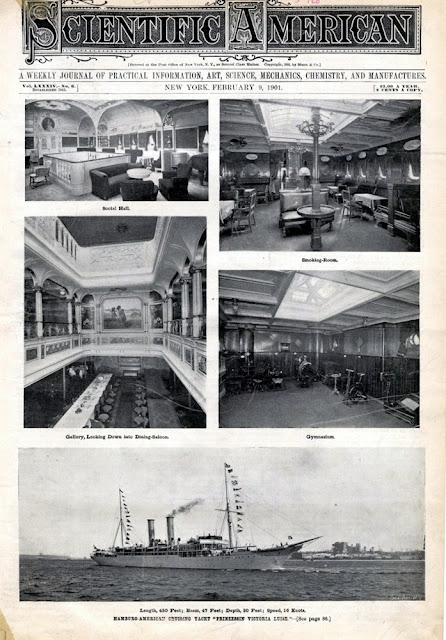

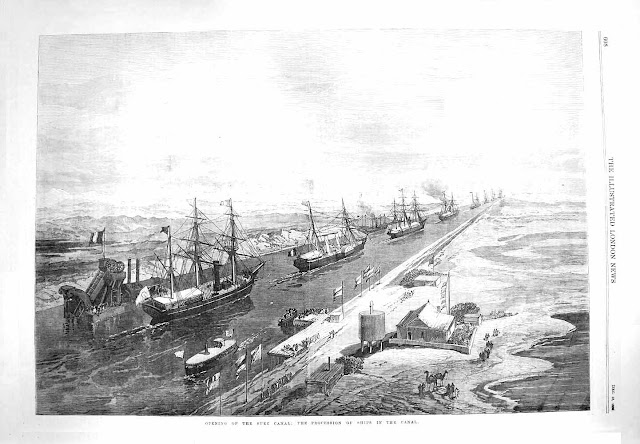


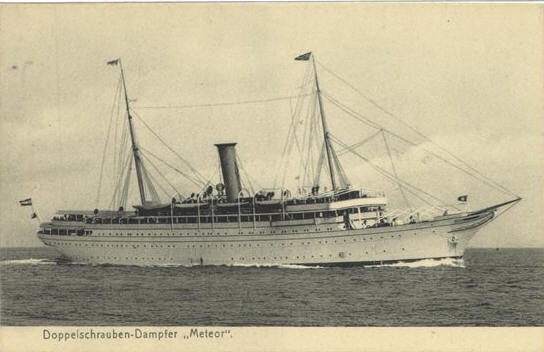
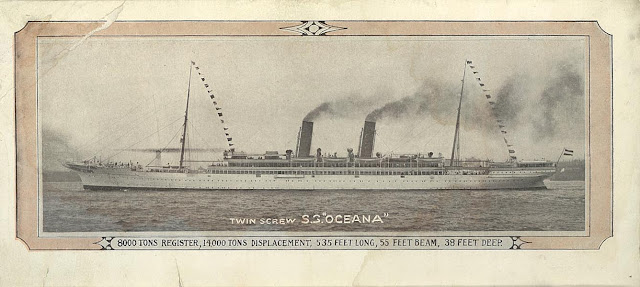









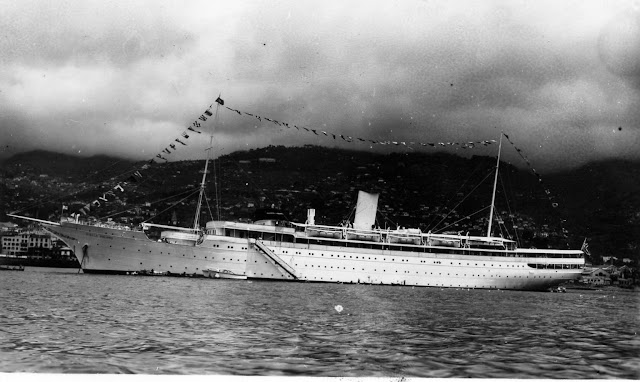










It was really an interesting blog, Thank you for providing unknown facts.
ReplyDeleteaviation institute in Chennai
Air Hostess Training Institute in Chennai
Airline Courses in Chennai
ground staff training in Chennai
Aviation Academy in Chennai
air hostess training in Chennai
airport management courses in Chennai
ground staff training in Chennai
I really liked reading all the articles published on your website. All the credits to the author of the post.It's such a great lesson, and your explanation on How to have the best disney cruise vacation ever is greater than it. Keep Blogging!
ReplyDelete